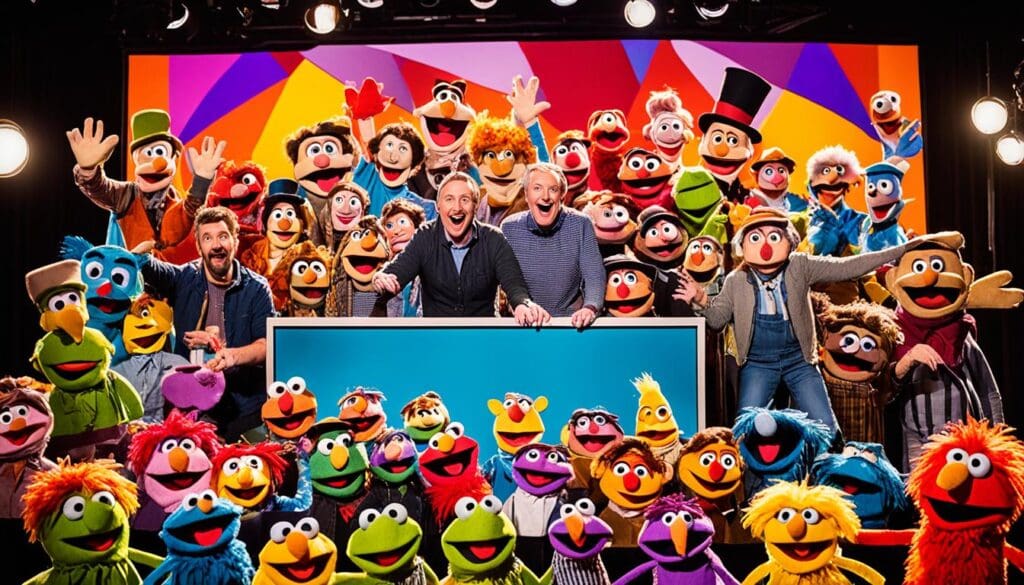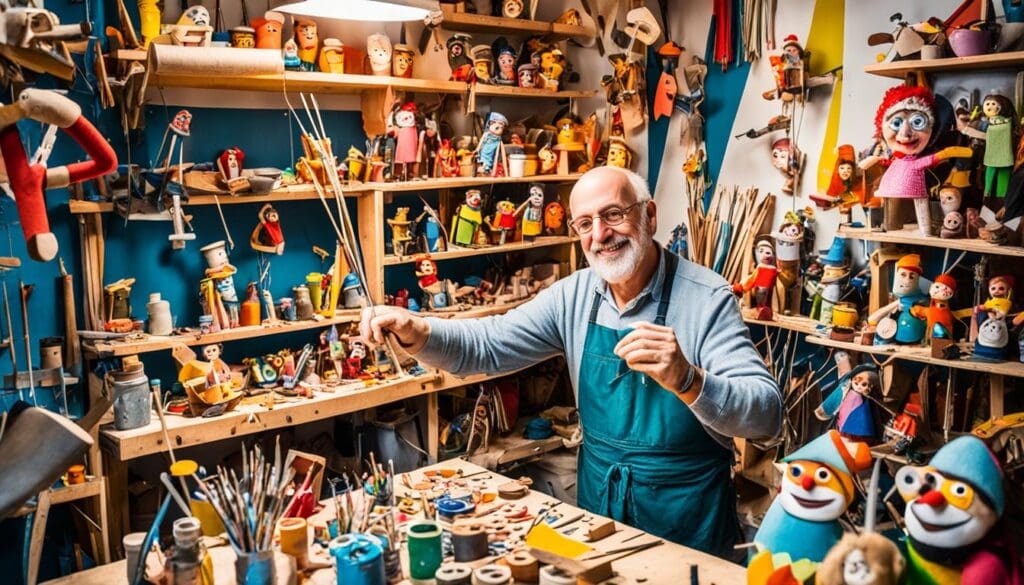Table of Contents
- The Argentina Puppet Museum:
- A Brief History of Puppetry in Buenos Aires
- Puppets on Television: The Rise of a New Medium
- Puppetry Techniques for Television
- Television Puppetry for Adults
- Puppet Collectors in Buenos Aires
- Handmade Puppet Crafts in Buenos Aires
- Puppet Shows in Buenos Aires
- The Legacy of Argentine Puppetry
- Puppetry and Cultural Identity in Buenos Aires
- The Future of Puppetry in Buenos Aires
Have you ever wondered about the fascinating world of Argentine puppetry? From traditional Guignol puppets to modern Muppet-inspired creations, Buenos Aires has a rich tradition that will captivate your imagination. Join us as we explore the history, techniques, and cultural significance of Argentine puppetry. Discover why Buenos Aires and Malaga are the two best destinations to learn Spanish while immersed in the enchanting world of puppetry!
The Argentina Puppet Museum:
Uncover the hidden puppet collectors community and the Argentine Puppet Museum https://museodeltiterebsas.wixsite.com/museoargdeltitere get a glimpse into the vibrant world of handmade puppet crafts in Buenos Aires.


- University Spanish Courses in Argentina
- Malaga Summer Camp
- Learn Spanish in Milwaukee
- Profesores de ingles en Malaga
- Profesores de ingles en Buenos Aires
- Learn Spanish in Ottawa
- Spanish Tutor in Toronto
- Learn Spanish Online
- Argentina Study Visa
- Coorporate Spanish Classes
- Spanish Academy in Buenos Aires
As you delve deeper into the legacy of Argentine puppetry, you’ll discover its profound connection to cultural identity and how it serves as a means of storytelling and cultural expression. Reflect on the future of puppetry in Buenos Aires and how new technologies and creative approaches are shaping its path forward.
Don’t miss out on this unique opportunity to learn Spanish while immersing yourself in the captivating world of Argentine puppetry. Buenos Aires and Malaga await you with their vibrant cultural scenes and immersive language learning experiences. Are you ready to embark on this extraordinary journey? Let’s explore the art of Argentine puppet making together!
A Brief History of Puppetry in Buenos Aires
Puppetry in Buenos Aires has a long and fascinating history that dates back to the early 20th century. The city has been a hub of creativity and innovation in the realm of puppetry, contributing to Argentina’s rich cultural heritage.
One of the most prominent forms of puppetry in Buenos Aires is the traditional Guignol performances. These shows, beloved by both children and adults, originated in France but found their way to Buenos Aires, captivating local audiences. Guignol puppets, known for their distinctive appearance and expressive gestures, came to life in small theaters across the city.
Over time, puppetry in Buenos Aires evolved, expanding its reach through the medium of television. Puppet characters gained widespread recognition and became beloved celebrities in their own right. This transition allowed puppetry to thrive and continue enchanting audiences, both young and old, on a larger scale.
The Root of Argentine Puppetry Tradition
The puppetry tradition in Buenos Aires is deeply ingrained in Argentine culture, reflecting the customs, values, and stories passed down through generations. Puppet shows have become an integral part of the cultural fabric, preserving the essence of Argentine history and traditions.
An assortment of puppetry techniques and styles have flourished in Buenos Aires, showcasing the artistic prowess and creativity of Argentine puppeteers. The artistry of crafting these intricate and expressive puppets is truly remarkable, with artisans infusing their unique vision into each creation.
The Influence of Puppetry on Argentine Society
Puppetry has played a significant role in shaping Argentine society, serving as a form of entertainment, education, and cultural expression. Puppet shows in Buenos Aires have entertained and inspired audiences of all ages, transporting them into magical worlds and exploring complex themes.
Through puppetry, Argentine puppeteers have addressed social and political issues, fostering discourse and igniting conversations. These performances have sparked imagination, encouraged empathy, and challenged societal norms, creating a platform for dialogue and reflection.
Today, puppetry continues to evolve in Buenos Aires, with puppeteers incorporating modern technologies and innovative storytelling techniques. While honoring the traditions of the past, they push the boundaries of the art form, ensuring its continued relevance and impact on future generations.
Puppets on Television: The Rise of a New Medium
The advent of television in the mid-20th century revolutionized puppetry, allowing puppeteers to reach millions of viewers in the comfort of their own homes. Puppetry on television opened up a whole new world of possibilities, expanding the reach and impact of this timeless art form.
New scripts, plots, and fabrication techniques were developed to meet the demand for fresh and engaging content. Puppet characters like Kermit the Frog and Basil Brush became iconic figures, captivating audiences with their humor and charm. These lovable puppets became household names, transcending the boundaries of the television screen to become beloved pop culture icons.
Television also brought about new puppetry techniques that pushed the boundaries of creativity. Green screens and special effects allowed puppeteers to transport their characters to imaginative and fantastical worlds, captivating viewers with captivating visuals.
Puppetry Techniques in Television
With the introduction of television, puppetry techniques evolved to suit the demands of the medium. Puppeteers had to consider the limitations and possibilities of the small screen, resulting in the development of various styles and techniques for television puppetry.
- String puppets: These puppets, controlled by strings, allowed for intricate movements and delicate gestures. String puppetry was an important technique in early television puppet shows.
- Rod puppets: Rod puppets utilize rods and bars to control the movements of the characters. This technique provided greater control and allowed for more expressive performances.
- Glove puppets: Glove puppets fit over the hand of the puppeteer, allowing for easier manipulation and close-up shots of the puppet’s face.
- Shadow puppets: Shadow puppets, silhouettes created with translucent materials, were adapted for television to create visually stunning and atmospheric performances.
These techniques, combined with the use of advanced camera techniques and production methods, brought puppetry to life in new and exciting ways.


The Enduring Legacy of Television Puppet Shows
Television puppet shows have left a lasting impact on popular culture and continue to captivate audiences worldwide. These shows have not only entertained millions but have also inspired generations of puppeteers.
Through the medium of television, puppetry has become accessible to diverse audiences, fostering a love for this unique art form. Puppetry on television has played a significant role in preserving and promoting the art, ensuring its continued relevance in the modern era.
Puppetry Techniques for Television
Television puppetry encompasses various styles and techniques that bring puppet characters to life on the small screen. From string puppets to rod puppets, glove puppets to shadow puppets, each style offers unique capabilities and visual appeal. Designing puppets for television requires careful consideration of technical parameters, ensuring they are well-suited for close-up shots and special effects.
One of the key techniques utilized in television puppetry is chroma key compositing or green screens. By incorporating this technology, puppet manipulators are able to seamlessly place puppet actions in different settings or backgrounds, adding depth and enhancing the storytelling experience. This technique enables puppet characters to interact with virtual environments and facilitates the integration of both live-action and puppetry elements.
Television puppetry has also evolved to include stop-action animation, a method where puppets are moved incrementally and filmed frame-by-frame to create the illusion of movement. This technique has been popularized by shows such as “Rudolph the Red-Nosed Reindeer” and “Wallace and Gromit,” showcasing the versatility and charm of stop-motion puppetry.
Another aspect of television puppetry is the use of large costume puppet characters. These larger-than-life puppets make a captivating visual impact on screen and are often utilized in shows and productions aimed at young audiences or special events.
To give you a better understanding, here is a breakdown of the various puppetry techniques used in television:
- String Puppets: These puppets have strings attached to their limbs and are manipulated from above. They provide precise control over movement and are commonly used in traditional puppetry shows.
- Rod Puppets: Rod puppets have rods attached to their hands or other body parts, enabling puppeteers to manipulate their movements. These puppets are often used in children’s shows or for more expressive character performances.
- Glove Puppets: Glove puppets fit over the puppeteer’s hand, allowing for direct control of the puppet’s movements. They are versatile and frequently used in educational programs and interactive puppetry.
- Shadow Puppets: Shadow puppets are flat puppets made from translucent material, typically treated as silhouettes. Puppeteers use a light source to project their shadows onto a screen or surface, creating visually striking performances.
Puppetry Techniques for Television
| Puppetry Technique | Description |
|---|---|
| String Puppets | Puppets controlled by strings attached to their limbs, offering precise movement control. |
| Rod Puppets | Puppets manipulated using rods attached to their hands or body parts, allowing for expressive movements. |
| Glove Puppets | Puppets that fit over the puppeteer’s hand, providing direct control over their movements. |
| Shadow Puppets | Flat puppets made from translucent material, creating visual effects when projected as silhouettes. |
Television puppetry continues to evolve as new technologies and techniques emerge, pushing the boundaries of creativity and captivating audiences with innovative performances. Whether it’s manipulating string puppets, creating magical shadows with shadow puppets, or utilizing green screens for dynamic settings, television puppetry remains a fascinating and enchanting form of entertainment.
Television Puppetry for Adults
While puppetry is often associated with children’s entertainment, television has also showcased puppetry for adult audiences. Shows like “Kukla, Fran and Ollie” and “The Muppet Show” appealed to both adults and children, introducing subtle humor and satirical commentary.
Satirical puppet programs, such as “Spitting Image” and “Les Guignols de l’info,” gained international acclaim for their biting political satire and use of latex caricature puppets.
Popular Television Puppet Shows for Adults:
- “Kukla, Fran and Ollie”
- “The Muppet Show”
- “Spitting Image”
- “Les Guignols de l’info”
| Television Puppet Show | Genre | Synopsis |
|---|---|---|
| “Kukla, Fran and Ollie” | Variety show | A groundbreaking television show that featured a cast of puppets engaging in comedic sketches and musical performances. |
| “The Muppet Show” | Variety show | A beloved series created by Jim Henson, showcasing a diverse range of puppets and celebrity guests in a comedic and musical setting. |
| “Spitting Image” | Satire | A British satirical puppet show known for its sardonic portrayal of politicians, celebrities, and public figures. |
| “Les Guignols de l’info” | Satire | A French satirical puppet show that parodied politicians and public figures, combining humor and social commentary. |
Puppet Collectors in Buenos Aires
Buenos Aires is home to a passionate and thriving community of puppet collectors and enthusiasts. These individuals are dedicated to preserving and celebrating the rich history and artistry of puppetry. Puppet collectors in Buenos Aires actively search for rare and vintage puppets, curating impressive collections of antique puppet memorabilia.
These collectors participate in auctions and sales dedicated exclusively to puppets, which have become highly anticipated events in Buenos Aires. These gatherings attract both local and international collectors, creating a vibrant marketplace for puppet enthusiasts.
Furthermore, puppet enthusiasts in Argentina embrace the creativity and craftsmanship of puppet making by handcrafting their own puppets. They often engage in puppet-making workshops and events, where they can learn new techniques, exchange ideas, and showcase their skills. These gatherings foster a sense of community and camaraderie among puppet enthusiasts.
Whether it’s a vintage marionette, a intricately designed hand puppet, or a unique puppet character, Buenos Aires offers a haven for puppet collectors and enthusiasts.
Explore the fascinating world of puppet collecting in Buenos Aires, where vintage treasures and artistic craftsmanship come together in celebration of this beloved art form.
Puppet Collectors in Buenos Aires – Key Points
- Buenos Aires has a vibrant community of puppet collectors and enthusiasts.
- Collectors search for rare and vintage puppets, building impressive collections of antique puppet memorabilia.
- Auctions and sales dedicated to puppets are popular events in Buenos Aires, attracting local and international collectors.
- Puppet enthusiasts in Argentina often handcraft their own puppets and engage in puppet-making workshops and events.
Example of a Puppet Collectors Auction
| Puppet | Description | Estimated Value |
|---|---|---|
| An intricately carved wooden marionette from the early 1900s, featuring hand-painted details and movable joints. | $2,500-$3,000 | |
| A vintage sock puppet with a hand-stitched fabric body and button eyes, reminiscent of classic children’s television shows. | $500-$700 | |
| A handcrafted foam puppet created by a local artist, featuring intricate details and a unique character design. | $300-$400 |
Handmade Puppet Crafts in Buenos Aires
Buenos Aires is renowned for its vibrant community of puppet makers who specialize in creating unique and captivating handmade puppet crafts. These talented artisans utilize a variety of materials and techniques to bring their puppets to life, resulting in stunning works of art that capture the imagination of audiences. From intricately carved wooden puppets to intricately designed foam puppets, the craftsmanship and attention to detail in Buenos Aires puppet making are truly remarkable.


Intricate Designs and Expert Craftsmanship
The puppet makers in Buenos Aires possess an exceptional level of skill and creativity, combining traditional puppetry techniques with innovative design elements. Each puppet is carefully handcrafted, with meticulous attention to detail in every stitch, brushstroke, and carving. These dedicated artisans exercise their artistic vision to create puppets that are not only visually stunning but also express a unique character and personality.
A Variety of Materials and Techniques
From expression-filled faces to fluid movements, Buenos Aires puppet makers employ a diverse range of materials and techniques to achieve their desired artistic goals. Some artisans work with wood, sculpting each puppet by hand and meticulously painting them to bring them to life. Others utilize foam, fabric, and various textiles to craft lightweight yet expressive puppets. The use of mixed media, such as combining fabric with papier-mâché or incorporating wire armatures for poseability, adds depth and versatility to the puppets created in Buenos Aires.
Storytelling Through Puppetry
Handmade puppet crafts in Buenos Aires are not just objects of beauty; they serve as powerful storytelling tools. Puppet makers infuse their creations with character, allowing them to convey emotions and narratives onstage. The carefully chosen colors, patterns, and textures enhance the overall storytelling experience, captivating audiences of all ages and immersing them in imaginative worlds.
The Legacy of Handmade Puppet Crafts
The tradition of handmade puppet crafts in Buenos Aires has endured for generations, leaving a lasting legacy on the art of puppetry. The dedication of these skilled artisans to their craft ensures that the tradition continues to thrive, inspiring new generations of puppet makers and enchanting audiences both locally and internationally. Through their extraordinary creations, the puppet makers of Buenos Aires keep the magic of puppetry alive.
Puppet Shows in Buenos Aires
Puppet shows are a cherished form of entertainment in Buenos Aires, where dedicated theaters showcase the artistry and versatility of Argentine puppetry. These shows cater to audiences of all ages, blending traditional puppetry styles with innovative performances that captivate and inspire.
Children’s puppet shows in Buenos Aires transport young audiences into enchanting worlds filled with beloved characters and imaginative storytelling. Classic children’s stories come to life through the skillful manipulation of puppets, captivating the young minds with their vibrant colors and whimsical movements.
For adults, puppet shows in Buenos Aires offer thought-provoking performances that explore complex themes and narratives. Through the medium of puppetry, puppeteers push creative boundaries and experiment with innovative storytelling techniques, engaging audiences on a deeper intellectual and emotional level.
One of the renowned puppet theaters in Buenos Aires is El Tinglado, which has been showcasing puppetry performances for decades. The theater hosts a diverse range of shows, including traditional puppetry, experimental puppetry, and puppetry-based plays, providing a platform for both established and emerging puppeteers to showcase their talent.
Another prominent puppet theater in Buenos Aires is Titiritun, which focuses on puppet shows for children. Their performances are filled with laughter, music, and colorful puppets that create a joyous and captivating experience for young audiences.
Here is a glimpse of some popular puppet shows in Buenos Aires:
- “Pulcinella” – A traditional Italian puppet show featuring the iconic character Pulcinella, known for his mischievous adventures and comedic antics.
- “El Lago de los Cisnes” – A puppet adaptation of Tchaikovsky’s famous ballet, “Swan Lake,” mesmerizing audiences with its graceful puppets and enchanting storyline.
- “El Circo de Marionetas” – A whimsical circus-themed puppet show that showcases the acrobatics and tricks of talented puppet performers.
These puppet shows in Buenos Aires not only entertain but also serve as a testament to the creativity and craftsmanship of Argentine puppeteers. They continue to enchant audiences of all ages, keeping the timeless art of puppetry alive and thriving in the vibrant cultural landscape of Buenos Aires.
| Benefits of Puppet Shows in Buenos Aires | Reasons to Attend Puppet Shows |
|---|---|
| Fosters imagination and creativity | Discover new stories and characters |
| Engages children in interactive learning experiences | Supports local puppetry artists and theater |
| Offers a unique form of entertainment | Creates lasting memories for families |
| Encourages cultural appreciation and understanding | Provides an escape from everyday life |
The Legacy of Argentine Puppetry
The legacy of Argentine puppetry is deeply rooted in the rich cultural heritage of the country and has left an indelible mark on the world of puppetry. One of the main factors contributing to its enduring popularity is the presence of iconic puppet characters that have captured the hearts of audiences both locally and internationally.
From the beloved Guignol, a traditional puppet character often associated with Argentine puppetry, to globally recognized figures like Kermit the Frog from “The Muppet Show,” Argentine puppetry has given birth to a diverse and iconic cast of characters that continue to captivate and inspire.
These iconic puppet characters have not only entertained generations of viewers but have also become cultural symbols, representing the creativity, artistry, and storytelling prowess of Argentine puppeteers. Their popularity has extended beyond the borders of Argentina, garnering international acclaim and contributing to the global recognition of Argentine puppetry as a vibrant and significant art form.
The influence of Argentine puppetry extends far beyond its inventive characters. It has served as a source of inspiration for puppeteers and puppet enthusiasts worldwide, inspiring new generations to explore the artistry, techniques, and storytelling potential of puppetry. The Argentine puppet legacy continues to inspire innovation and creativity in the field, ensuring that the art form thrives and evolves.
Puppetry and Cultural Identity in Buenos Aires
Puppetry in Buenos Aires is a significant reflection of Argentine culture and identity. Passed down through generations, puppetry traditions in Argentina embody the country’s unique cultural heritage. Puppetry serves as a powerful medium for storytelling and cultural expression, preserving and celebrating Argentine traditions, stories, and values.
Through the art of puppetry, Argentine puppeteers bring to life the diverse narratives that define their cultural identity. They weave together historical events, folktales, and legends, creating performances that captivate audiences and foster a stronger sense of connection to their heritage.
Argentine puppet traditions are deeply rooted in the country’s cultural fabric, encompassing a wide array of styles, techniques, and characters. From the traditional Guignol puppets to the vibrant and colorful creations inspired by local folklore, each puppet performance reflects the rich tapestry of Argentine culture.
The Importance of Puppetry in Argentine Cultural Identity
Puppetry plays a vital role in preserving and passing on cultural traditions from one generation to the next. The stories presented through puppetry serve as a link to the past, connecting Argentine communities to their history and ancestral roots. This art form not only entertains but also educates, instilling a sense of pride and identity among the viewers.
Furthermore, puppetry provides a platform for exploring contemporary issues and challenging societal norms. Puppet performances often tackle social, political, and environmental themes, encouraging audiences to reflect on their own cultural values and contribute to meaningful conversations.
Argentine Puppetry as Cultural Diplomacy
Argentine puppetry has also become a powerful tool for cultural diplomacy, representing the country on international stages. Puppetry festivals and exchanges allow Argentine puppeteers to showcase their unique artistic expressions and engage with diverse global audiences. Through these cultural exchanges, Argentina shares not only its puppetry traditions but also its cultural identity with the world.
Preserving Argentine Puppet Traditions
To ensure the preservation of Argentine puppetry, efforts are being made to pass on the knowledge and skills to future generations. Puppetry schools, workshops, and mentorship programs provide aspiring puppeteers with the opportunity to learn from experienced practitioners and delve deeper into the intricate art form.
By nurturing young talent and providing them with platforms to showcase their skills, Argentina is safeguarding its puppetry heritage and ensuring its continuation for years to come.
In summary, puppetry in Buenos Aires plays a crucial role in shaping and maintaining Argentine cultural identity. It is an art form that not only entertains but also preserves, celebrates, and shares the rich traditions, stories, and values of Argentina with both local and global audiences.
The Future of Puppetry in Buenos Aires
The art of puppetry in Buenos Aires is poised for an exciting future, driven by new technologies and innovative approaches. Puppeteers are embracing digital media and incorporating interactive elements into their performances, creating immersive experiences that captivate audiences. This blending of traditional craftsmanship with modern techniques ensures that puppetry in Buenos Aires remains relevant and continues to evolve.
One of the key trends in the future of puppetry is the use of digital media. Puppeteers are integrating projections, animations, and multi-media elements into their shows, enhancing storytelling and creating visually stunning performances. This fusion of technology and puppetry allows for greater flexibility and opens up new possibilities for artistic expression.
Puppetry festivals, workshops, and community events are vital in promoting and preserving the art form. These gatherings provide platforms for puppeteers to showcase their work, exchange ideas, and inspire the next generation of puppeteers. They also foster a sense of community among puppet enthusiasts, fostering collaboration and pushing the boundaries of puppetry.
The future of puppetry in Buenos Aires is bright, with puppeteers and audiences alike embracing the possibilities of this expressive art form. As new technologies continue to emerge and creativity knows no bounds, the art of puppetry will continue to thrive, entertaining and inspiring audiences for generations to come.


Maria Olson
At VAMOS Academy, I craft stories sprinkled with my love for exploration and food. Whether it’s the tang of a local dish or the rhythm of a new dialect, I bring these experiences to you. Ready for an adventure that tickles your taste buds and ignites your wanderlust? Let’s embark on this journey together, one story and one bite at a time.
Hey there! I’m Maria Olson, your go-to nomad with a suitcase in one hand and a pen in the other, forever caught in the dance of Buenos Aires’ energy and Malaga’s serene vibes. My life’s an open book of travels, stitched together by the countless cultures I’ve embraced and the languages that now flow from my tongue as easily as my native speech. Speaking Spanish, English, French, German, and Russian isn’t just a party trick; it’s my way of unlocking the world’s secrets, one conversation at a time.
But let’s talk about the real spice of life—food. My adventures are nothing without the flavors I’ve savored and the culinary treasures I’ve unearthed along the way. Whether it’s diving into Argentina’s vibrant markets or sipping on sangria in a hidden corner of Spain, I bring these experiences to the table, sharing a slice of the world through my tales.
Crafting blogs for VAMOS Academy, I blend my wanderlust with a dash of creativity to serve up content that’s as unique as the journeys that inspired them. So, if you’re itching for adventure, hungry for a taste of the unknown, or simply curious about the art of language, you’re in good company.




